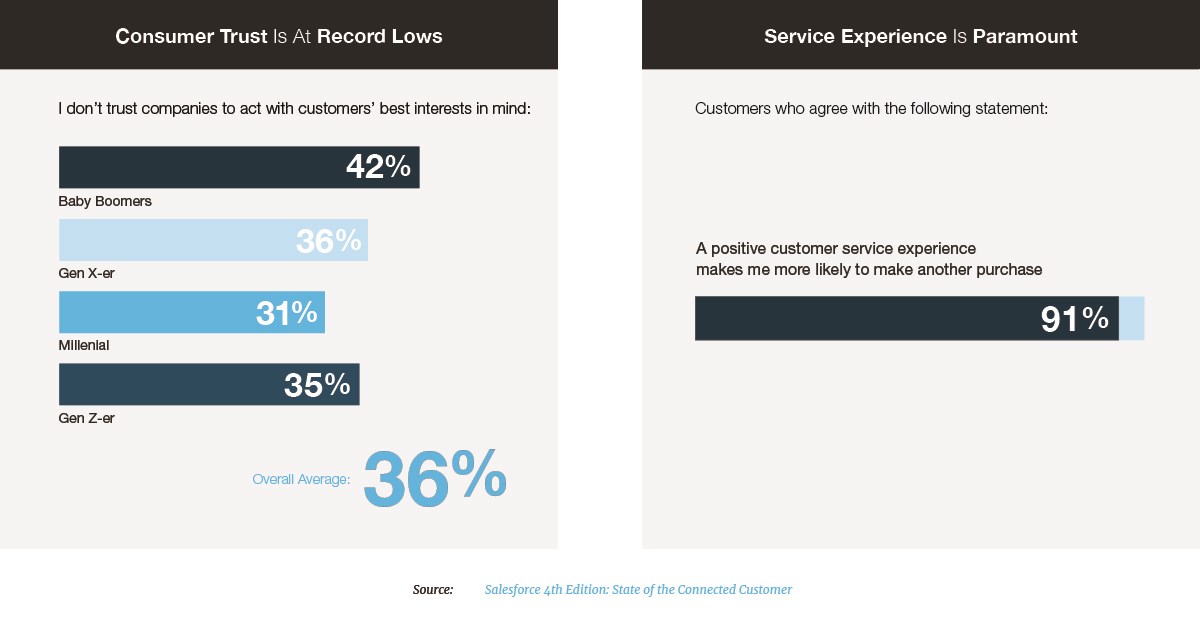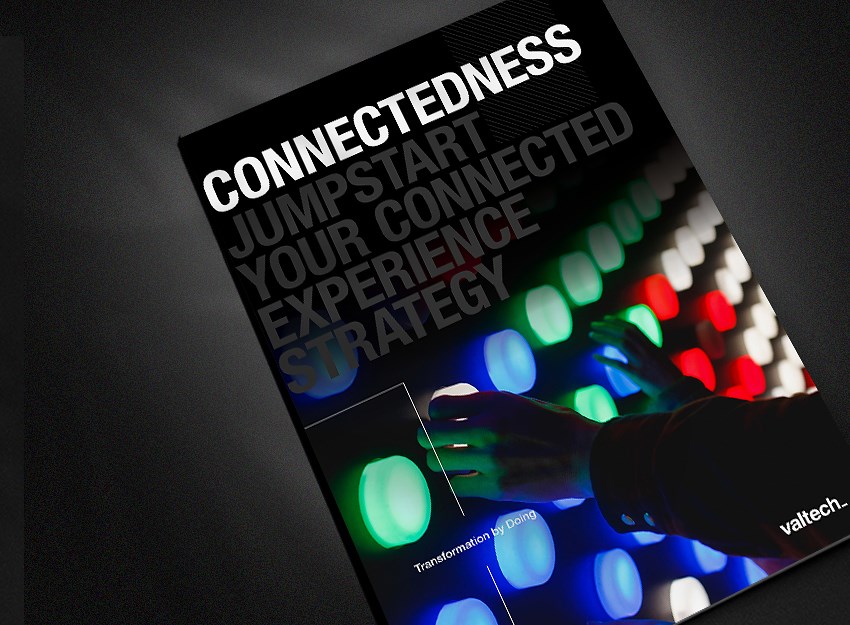maio 21, 2021
A lack of social connection has a far greater detriment to health than obesity, smoking or high blood pressure according to a recent study conducted by Stanford Medicine. People who feel more connected to others have lower levels of anxiety and ultimately better health. This same phenomenon can be applied to our digital interactions; the more connected we feel when experiencing a brand, the healthier the relationship becomes.
Connectedness is about creating deeper relationships
When a company knows more about you, they can create a deeper relationship with you and help you achieve more meaningful goals. Why would you want that? Convenience. Fun. Empathy. Value. We all could use a little help achieving our goals. But these new connected experiences are more complex. Ideally these relationships tap into a deeper emotional connection between a brand and a customer, and even customers to each other. They connect you to multiple parties that you were not connected to before. They allow a broader customer experience with relatively higher efficiency.
Connecting to the higher need
Like retail, healthcare has been very episodic in the past. If you get sick, you go to the hospital. The value proposition of connected health care is keeping you healthy, as opposed to just getting you to see a doctor. As an example, there are healthcare practices, such as Boutique Medicine and Concierge Practices, where the doctor no longer accepts insurance for services and instead charges patients an annual or monthly amount for 24/7 access and full coordination of care.
Uber has significantly advanced the cab company model, and continues to innovate beyond ride sharing. The business model is more efficient and it has made many people’s lives easier. Has it created deeper relationships? In my experience, the conversations with the drivers have become better.
Ultimately, whether healthcare or ridesharing, traditionally standalone service moments are evolving into repeated relationships. As more brands engage directly with the customers they serve, the question becomes: How do companies create deeper relationships to attract and retain loyal customers?

Deeper Relationships are not episodic
Replacing episodic interactions with frequent, low-friction, inspiring interactions enabled by rich, personalized data exchange is the goal of any connected strategy. Often, customers are not aware of all the options they have. Surfacing these options is part of the fun, as long as that experience is frictionless and convenient.
Interaction strategy
- Create unified customer experiences across interactions
- Improve customization based on past interactions and stated desires
- Learn about the collective needs of the population to enhance offerings
- Become a trusted partner to the customer
The benefits a customer receives from a company are ongoing and ever-changing. The value delivered has become the heart of any viable brand. Today that value must be immediate, visible and detailed:
- Making reservations at a nearby restaurant within seconds
- Tracking a package and being pinged when it arrives
- Providing multiple options, ratings and reasons to believe
- Offering curated experiences based on individual preferences

Positive Service Experiences are Paramount
Trust is at an all-time low. People have been isolated and have experienced what it’s to like to get the run-around. Being unable to complete a transaction, return an item, or a find a solution all add up to less trust. Customers are becoming tired of being told to be patient or hearing the common response “Sorry for the inconvenience.”

When the website says inventory is available, it should be there. If an email arrives after the order is placed that says the item is on backorder, customers feel deceived. If customers are told returns cannot be accepted because of COVID and return policies have not been updated to reflect that, customers feel cheated. It has become imperative for companies to have their facts straight. Experiences must back up the promises.
Building Connected Experiences
Making sure experiences are trustworthy and meet customers ever-evolving expectations takes planning. Valtech’s eight step process helps direct the planning path:
- Map the current customer journey of one customer experience
- Identify customer willingness-to-pay drivers and pain points
- Capture the information flow for the customer experience
- Identify the deeper needs of the customer
- Understand the current relationship with your customer across separate repeated customer experiences
- Identify new opportunities to reduce pain points and lower fulfillment costs
- Find ways to utilize information gathered from repeated interactions to improve the recognize-request-respond cycle
- Provide assurances that data-protection are in place to maintain customer trust
Connected experience strategies are a vital part of transformation
Services are interwoven with our daily lives. How we communicate and expect service experiences are evolving. And this isn’t the end — connected strategies will continue to change based on consumer behavior and desires. To learn more, download Valtech’s latest whitepaper, Connectedness: Jumpstart Your Connected Experience Strategy.







